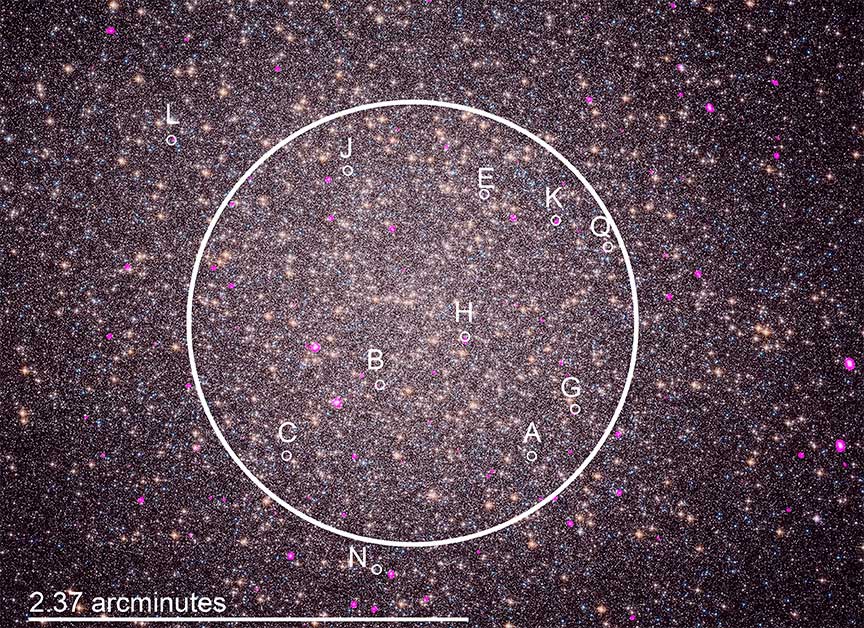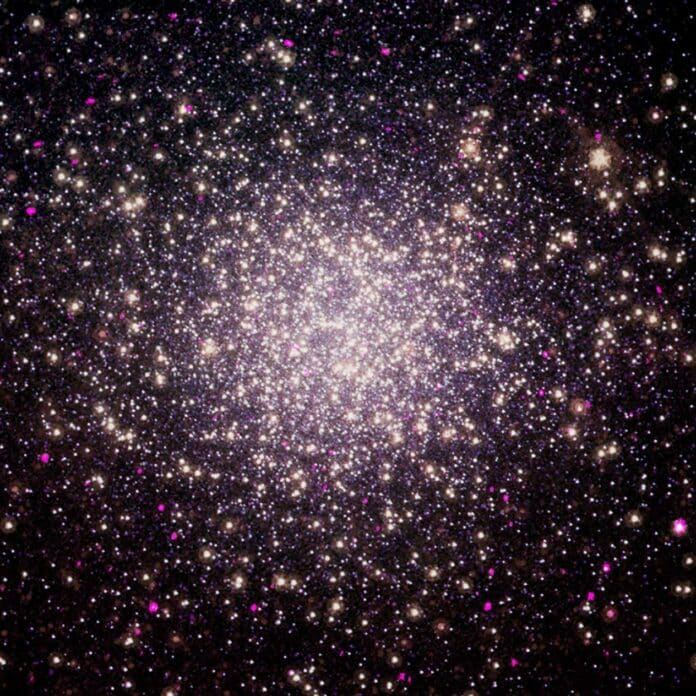The observations from NASA’s Chandra X-ray Observatory suggest that spider pulsars in the Omega Centauri globular cluster are destroying companion stars within their reach.
Given its name from the harm they cause to their small companion stars in orbit, spider pulsars are unique millisecond pulsars. The outer layers of the pulsar’s companion stars are gradually removed by winds of energetic particles that shoot from the spider pulsars.
Spider pulsars come in two different forms depending on the size of the star being destroyed. “Redback” spider pulsars are damaging companion stars weighing between a tenth and a half the mass of the Sun. Meanwhile, the “black widow” spider pulsars damage companion stars with less than 5 percent of the Sun’s mass.
Using the Parkes and MeerKAT radio telescopes, astronomers discovered 18-millisecond pulsars in Omega Centauri — about 17,700 light-years from Earth.

Afterward, a pair of Astronomers from the University of Alberta in Canada examined Omega Centauri Chandra data to determine which millisecond pulsars emit X-rays.
Eleven-millisecond X-ray-producing pulsars were discovered, five of which were spider pulsars centered close to Omega Centauri’s center. The data from Omega Centauri was then integrated with Chandra observations of 26 spider pulsars in 12 other globular clusters.
The results showed a clear difference between the two classes of spider pulsars. They found that redbacks were brighter in X-rays than black widows.
The group is the first to demonstrate a general relationship between spider pulsar companion mass and X-ray brightness, with more massive companions associated with pulsars that emit more X-rays. This provides direct proof that the X-ray radiation a star receives depends on the mass of its companion to spider pulsars.
It is primarily believed that the Chandra-detected X-rays are produced when the winds of matter blowing away from the partner stars meet with the winds of particles flowing out from the pulsars, creating shock waves.
This result is consistent with theoretical frameworks produced by scientists. When the wind from a more massive star collides with the particles from the pulsar, it has a larger shock, resulting in brighter X-rays. This is because denser stars produce more wind. Because the companion stars and their pulsars are so close, the X-rays have the potential to harm both the stars and the pulsar’s wind seriously.
Journal Reference:
- Jiaqi Zhao, Craig O. Heinke. A Chandra X-ray study of millisecond pulsars in the globular cluster Omega Centauri: a correlation between spider pulsar companion mass and X-ray luminosity. Monthly Notices of the Royal Astronomical Society. DOI: 10.48550/arXiv.2309.13189
